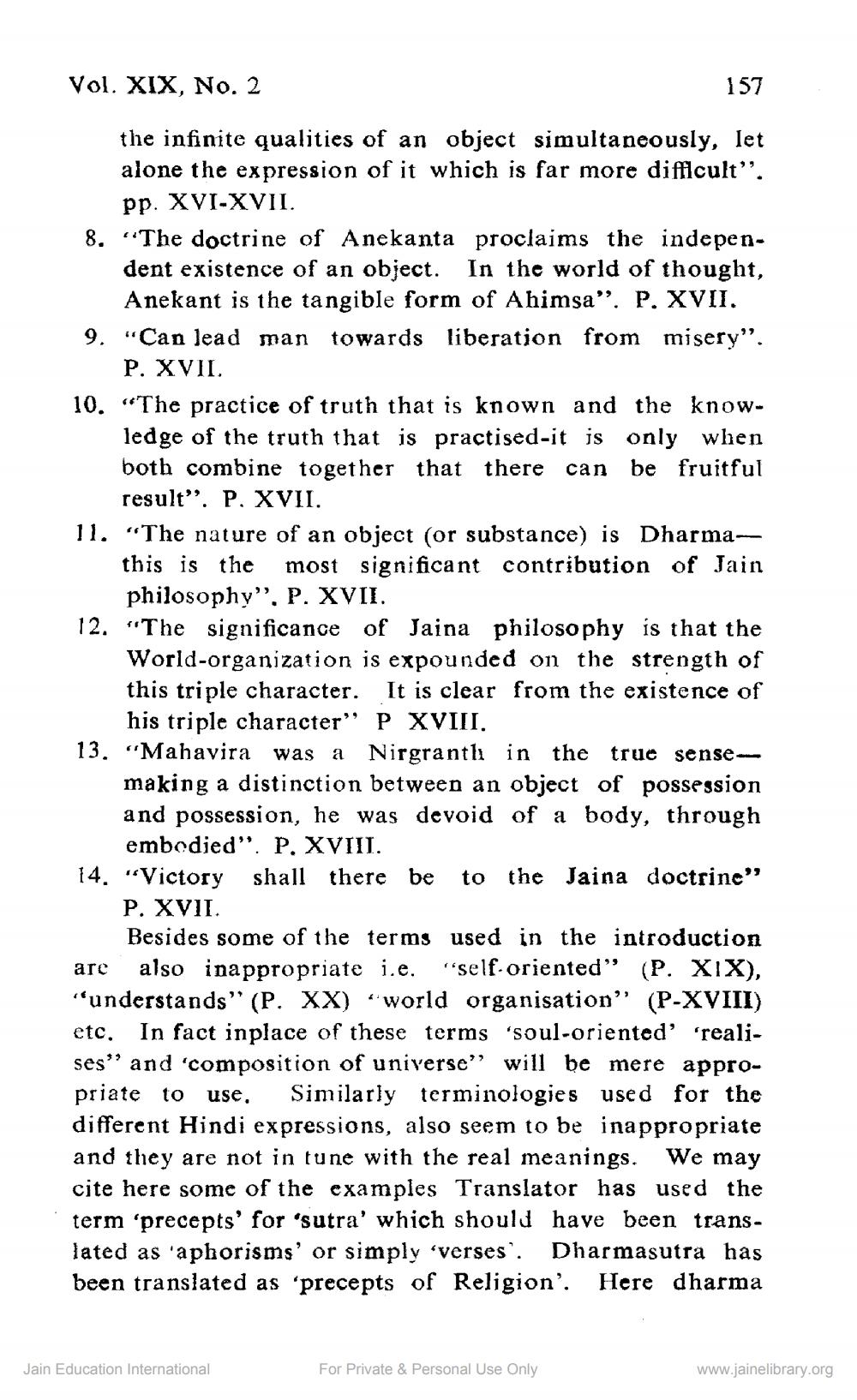________________
Vol. XIX, No. 2
157
the infinite qualities of an object simultaneously, let alone the expression of it which is far more difficult”.
pp. XVI-XVII. 8. "The doctrine of Anekanta proclaims the indepen
dent existence of an object. In the world of thought,
Anekant is the tangible form of Ahimsa". P. XVII. 9. "Can lead man towards liberation from misery".
P. XVII. 10. “The practice of truth that is known and the know
ledge of the truth that is practised-it is only when both combine together that there can be fruitful
result". P. XVII. 11. "The nature of an object (or substance) is Dharma
this is the most significant contribution of Jain
philosophy". P. XVII. 12. "The significance of Jaina philosophy is that the
World-organization is expounded on the strength of this triple character. It is clear from the existence of
his triple character" P XVIII. 13. "Mahavira was a Nirgranth in the true sense
making a distinction between an object of possession and possession, he was devoid of a body, through
embodied". P. XVII. 14. “Victory shall there be to the Jaina doctrine"
P. XVII.
Besides some of the terms used in the introduction are also inappropriate i.e. "self-oriented” (P. XIX), "understands" (P. XX) “world organisation" (P-XVIII) etc. In fact inplace of these terms 'soul-oriented' 'realises" and 'composition of universe" will be mere appropriate to use. Similarly terminologies used for the different Hindi expressions, also seem to be inappropriate and they are not in tune with the real meanings. We may cite here some of the examples Translator has used the term 'precepts' for 'sutra' which should have been translated as 'aphorisms' or simply 'verses'. Dharmasutra has been translated as 'precepts of Religion'. Here dharma
Jain Education International
For Private & Personal Use Only
www.jainelibrary.org




